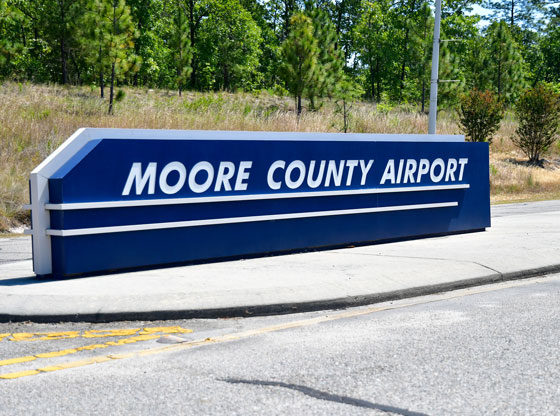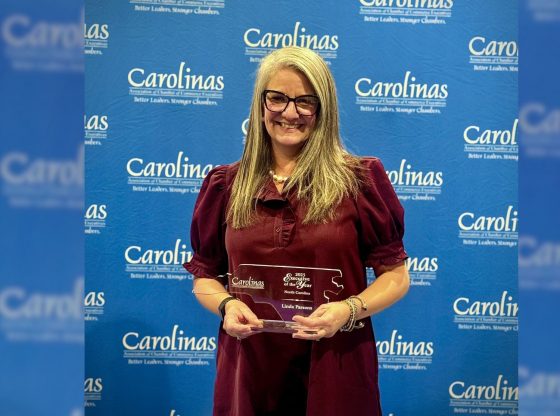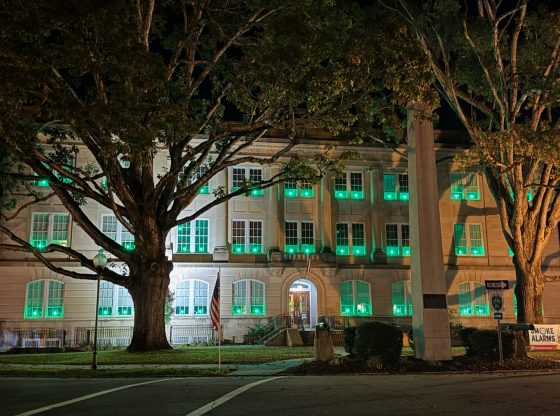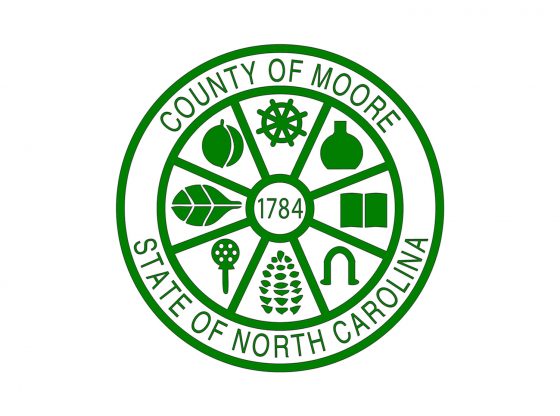At a special meeting held on Tuesday afternoon, the Moore County Board of Commissioners heard a detailed proposal regarding the potential launch of commercial airline services from Moore County Airport. The presentation, delivered at the Historic Carthage Courthouse, was given by representatives from the Moore County Airport and Volaire Aviation Consulting, the firm overseeing the proposal.
The report delineated a partnership with an unnamed major regional carrier that could bring daily commercial flights to the county. Speakers included Moore County Airport Authority Adam Kiker, Moore County Airport Director Rick Cloutier, and Volaire Managing Partner Jack Penning.
Kiker said the proposal follows more than a year of research and outreach. “We’ve spent the last six to nine months vetting this, talking with air carriers and airlines, and now we’re to the point where it’s no longer hypothetical,” Kiker said. “If the community is interested and is able to provide the revenue support, commercial flights can happen.”
According to Penning, the airline being considered is the largest regional carrier in the U.S. and is proposing daily service to Washington D.C.’s Dulles International Airport. The proposed route would provide “seamless connectivity” to 83 additional destinations through initial ticketing and transfers.
“To the consumer, you will have one of the largest carriers in the world flying right into Moore County,” explained Penning. “I think it’s remarkable that I’m able to stand here and say we have an airline that is willing to serve the area. It’s a partnership that other communities wish they could get.”
However, the presentation was not without a catch: the carrier requires a financial cushion in the form of a Minimum Revenue Guarantee.
Penning explained that the proposal is not a subsidy or a government-funded airline, but rather a partnership requiring a $3 million minimum revenue guarantee (MRG), a financial tool allowed by the FAA to help new services ramp up. The MRG would act as a safety net for the airline, reimbursing only if revenue falls short during the startup phase.
“If the flights are profitable from the beginning, the fund isn’t touched,” Penning said. “We’re not guaranteeing their profit; we’re cushioning initial risk.”
Penning presented data showing that Moore County generates enough passenger demand to support daily flights. The gathered data shows that 613 passengers travel to or from Moore County via the Raleigh-Durham International Airport (RDU) each day.
“Pinehurst alone could support four flights a day,” Penning said, “but we’re only talking about one. The demand is absolutely there.”
Commissioner Jim Von Canon expressed skepticism, particularly about connectivity, costs, and the risk to taxpayers.
“You said there will be 83 connecting destinations,” Von Canon said. “If I have 23 people going 23 different places, won’t they be sitting in Dulles waiting? When time is of the essence, isn’t it faster to just go to Raleigh?”
Penning replied that flight schedules would align with major connection times at Dulles, and prices would match those out of RDU.
Penning also reiterated that the proposed commercial service is not intended to serve every Moore County traveler and would, in fact, only serve about 4% of all fliers.
“Ninety-six percent of all travelers from Moore County can still choose to go to Raleigh,” he said, stressing that the bar for success is intentionally low. Penning explained that the benefit lies in offering a more convenient, cost-effective alternative for business travelers, military personnel, and residents taking personal trips who don’t want to make the drive to Raleigh.
He noted that while Moore County is a tourism destination, the majority of the air travel demand originates from locals, not visitors.
Commissioner Nick Picerno also questioned the need for a public investment. “If it has such a good chance of success, why are we putting up the $3 million bond?” he asked. “Why aren’t they the ones paying us to come here?”
Penning maintained that the MRG is standard across the industry due to policy. “There are hundreds of other places out there that want this plane,” he said. “To be competitive, we have to reduce the airline’s risk.”
Commissioner John Ritter inquired about airport readiness. Kiker explained that current airport infrastructure, including the runway, is already capable of handling the aircraft. The airport would see upgrades in time, but the funds would be sourced elsewhere. He remained firm that, as a taxpayer himself, his goal is not to burden taxpayers.
Cloutier addressed concerns about noise by explaining that the model of plane provided by the regional carrier is no louder than the business jets currently utilizing the airport, and that there would be no added disturbances or noise.
“We already have 10 or more aircraft of this size taking off each day,” Cloutier said. “One more will be nearly negligible.”
While Von Canon praised the airport as “a jewel,” he remained unconvinced about the plan’s implications. “These things sound great in a perfect world, but we’re not in a perfect world,” he said, citing rising community concerns about increased traffic and growth.
Kiker stressed repeatedly that the goal is not to overburden Moore County residents. “Our intent is not to fund this through county tax dollars,” he said, explaining that contributions from nonprofits, private sponsors, and corporate partners are being explored. He added that the airport has received positive responses from major employers and institutions, including Pinehurst Resort and leaders at FirstHealth Moore Regional Hospital.
“We’ve only continued these conversations because the data and local leaders support it,” Kiker assured the commissioners. “If the community doesn’t see value in this, we won’t go forward.”
Penning noted the airline’s level of interest has been unusual. “This has only happened to me once before in 25 years,” he said, “and since we started, 88% of airlines that started with MRGs are still running and are very strong.”
Commissioner Tom Adams asked about the project’s timeline. Kiker said there is no fixed date, and the project would not advance without financial commitments and community support. The earliest potential flights, he said, could begin in March 2026 if all pieces fall into place.
The presentation ended with officials on both sides reiterating that the process remains in its early stages. No vote was taken, and no decision was made during the meeting. Commissioners said the discussion would continue as more feedback is gathered from residents and stakeholders alike.
~ Article by Sandhills Sentinel Assistant Editor Abegail Murphy. Photo by Sandhills Sentinel photographer Melissa Schaub.
Want Moore news that matters? Please click here to sign up for the free Sandhills Sentinel e-newsletter.



















